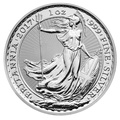Where is silver found?
Silver can be found all over the world, but is generally concentrated around volcanic and hydrothermal activity. Silver is rarely found in pure form – be it nuggets, lodes or placer deposits – but as alloys, mineral deposits, or in trace amounts of other ores. As such, silver mining is often part of larger operations and is one of many outputs from the mine.
As a precious metal of high value to investors, or as one of the most useful elements in everyday technologies, silver can be found throughout the electronic devices we use everyday, and in other places you wouldn't expect.
One of the oldest, naturally occurring ways of finding silver was in an alloy with gold, now known as electrum. Silver is more often mined from mineral deposits such as argentite, chlorargyrite and galena however.
Where does silver come from?
Silver beneath the Earth’s crust often mixes with sulphur, before being deposited into the crust by volcanic activity, or as silver salts in hydrothermal activity. As mentioned above it often mixes with other metals to form various alloys. These are then mined, and the metals separated and refined. Learn more about silver mining.
The American continent has some of the biggest silver deposits in the world, with mines in the US, Mexico, Bolivia, Chile, Peru and Canada all producing significant amounts of silver annually. Poland has three of the largest silver mines in the world, and gold-rich Australia also has significant silver deposits.
Who discovered silver?
No one knows who first discovered silver, but it has formed part of human society for thousands of years. As one of the seven metals of antiquity, silver has been known to humans for much of written civilisation. The Egyptians and Greeks offer some of the oldest records of silver, but historians see the Sumerians are also a potential alternative.
Credited with creating human civilisation as we know it, this Mesopotamian culture ruled from 4,000 BC for two millennia, before being absorbed by the Babylonians. The Lyres of Ur, dated to Sumerian cultures around 2500 BC, are some of the oldest examples of silver being used thousands of years ago. The wooden frames of these three lyres – and one harp – are decorated with both gold and silver, showing the Sumerians were capable of refining and working both precious metals.
The Queen’s Lyre (left) and silver lyre (right) on display at the British Museum, London.
Photo courtesy of Osama Shukir Muhhammed Amin under the Wikimedia Creative Commons license.
When was silver discovered?
There is no known specific time for when silver was discovered, as such an event pre-dates records. It was probably discovered by the Bronze Age at the latest, and evidence of silver work stretches back to 4,000 BC (as mentioned in the last section). Slag heaps that have been excavated in Asia Minor, and islands in the Aegean Sea, suggest that Anatolia, a region encompassing modern Turkey and the Mediterranean, were working silver at that time. It is likely therefore that the Egyptians and Sumerians were also working precious metals like gold and silver during this time period.
- How To Buy Gold
- How to Buy?
- Payment Options
- Delivery Options
- Gold Storage
- Storage at Brink's
- Gold Investment Guide
- Why buy gold?
- Is gold a good investment?
- Why physical gold?
- Best time to buy gold?
- Gold bars vs coins?
- Gold vs Silver
- Gold - Silver Ratio explained
- VAT on bullion
- CGT on bullion
- Legal tender coins
- Top 5 Gold Investments
- Top 5 Silver Investments
- Gold vs ISAs
- Gold vs Buy-to-Let
- Gold vs FTSE 100
- Gold vs Bitcoin
- Where to buy gold?
- Why buy from us?
- Where to sell gold?
- Coin Shops
- Gold Price Forecasts
- Top 10 Gold Producers
- Top 10 Gold Reserves
- Gold Britannia vs Sovereign
- Britannia coin designs
- Sovereign coin designs
- Sovereign Mintages
- Sovereign mint marks
- British coin specs
- What is a proof coin?
- Royal Mint bullion
- The Queen's Beasts
- Royal Mint Lunar Coins
- Bullion Refiners
- British coin mints
- Krugerrands
- Gold Tola - India & Pakistan
- Bullion Index











